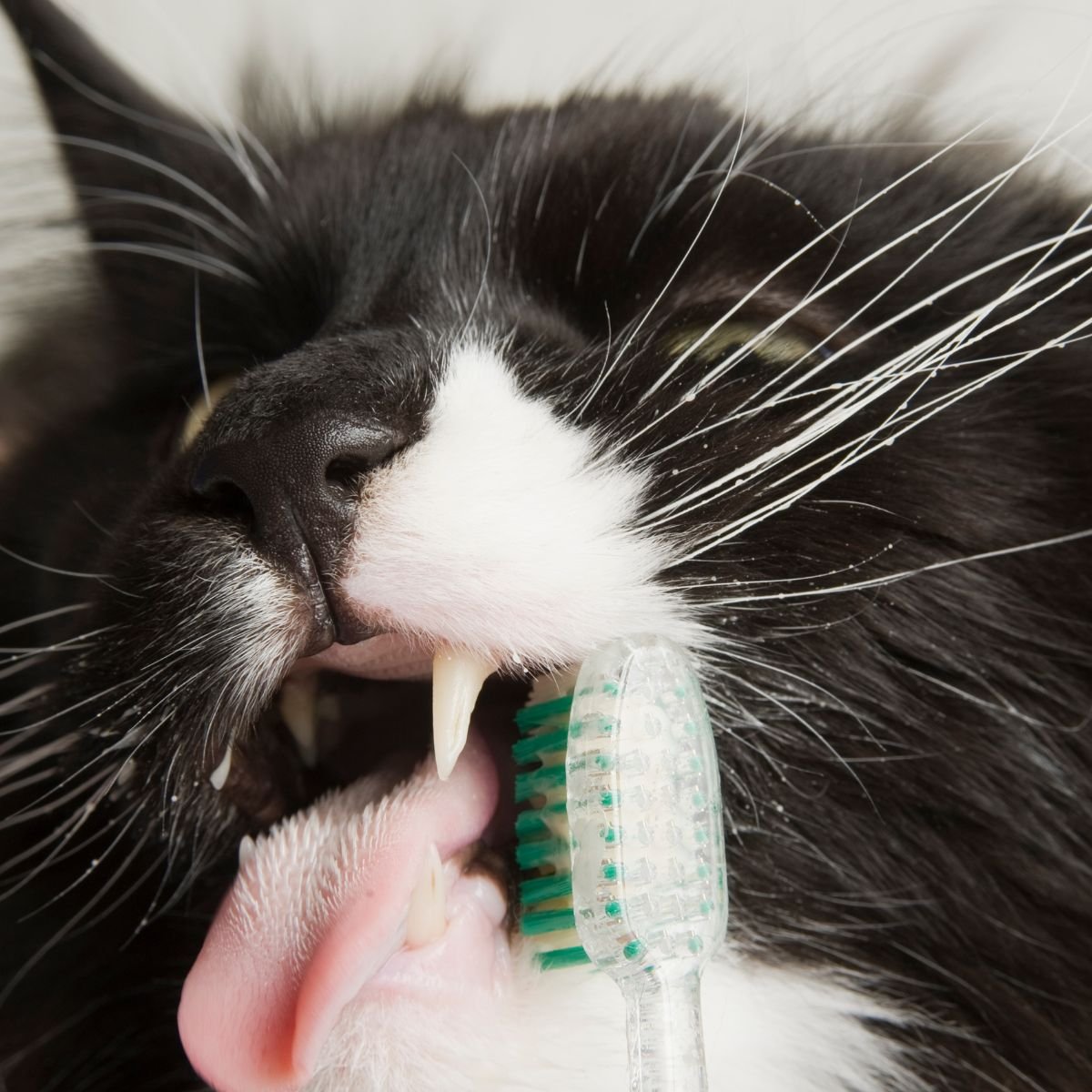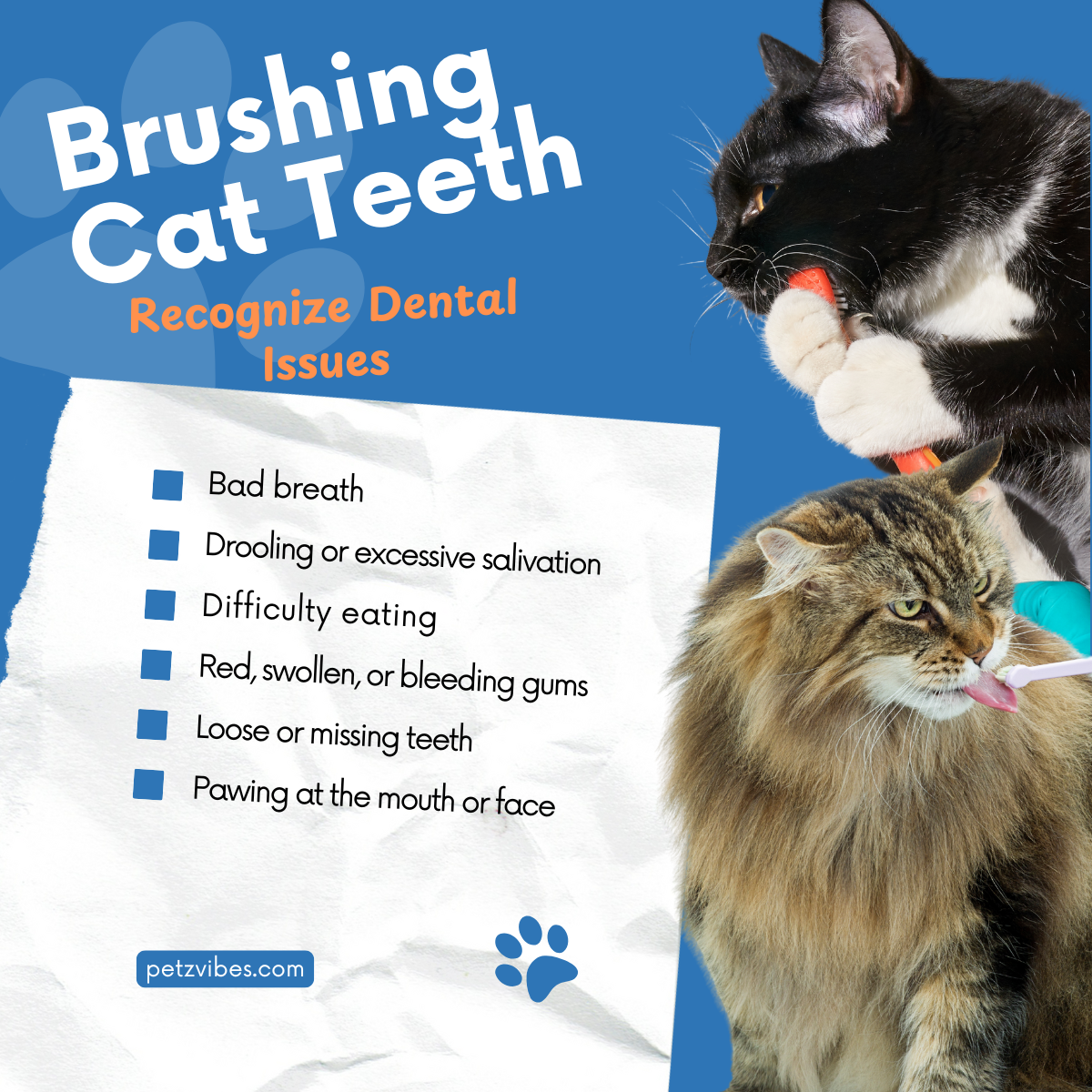🐱 Brushing Cat Teeth: A Comprehensive Guide to Feline Dental Care
Cats are known for their meticulous grooming habits, but when it comes to dental hygiene, they need a helping paw. Brushing cat teeth is a crucial aspect of feline care that often goes overlooked. Neglecting your cat’s oral health can lead to serious issues like periodontal disease, tooth loss, and even systemic health problems.
In this in-depth guide, you’ll discover why brushing cat teeth is a game-changer for your feline’s health, how to spot early signs of dental trouble, and step-by-step methods—complete with expert tips and alternative care options—to keep your kitty’s smile bright and pain-free.
Disclosure: PetzVibes.com is a free online platform that provides valuable content and comparison services. To keep this resource free, we may earn advertising compensation or affiliate marketing commissions from the partners featured in this blog.
Key Takeaways
-
Regular brushing cat teeth is the cornerstone of feline oral hygiene, dramatically reducing the risk of periodontal disease and gum infections in cats.
-
Equip yourself with a cat-specific toothbrush—soft-bristled, angled, or finger brushes designed for small mouths ensure effective plaque removal without harming delicate gums.
-
Use VOHC-approved cat toothpaste in flavors like poultry or fish—never human—to safely combat tartar and bad breath.
-
Cultivate patience and consistency by starting with short sessions, gradually increasing brushing time, and pairing every attempt with praise or treats.
-
Supplement home brushing with dental treats that mechanically scrub teeth and freshen breath as your cat chews.
-
Incorporate water additives into your cat’s bowl to reduce oral bacteria and slow plaque formation between brushings.
-
Provide dental or chew toys with textured surfaces. These toys engage your cat in play while helping clean teeth and massage gums.
🦷 Why Brushing Cat Teeth Matters
Like humans, cats can suffer from dental problems that cause discomfort and more severe health issues.
Dental disease affects nearly 90% of cats over four years old, making it one of the most common feline health issues—but it’s largely preventable with regular care. When brushing cat teeth, you remove plaque, the sticky bacterial film that hardens into tartar and leads to periodontal disease. Left unchecked, these issues can cause gum inflammation (gingivitis), tooth loss, and even life-threatening infections radiating to organs like the heart and kidneys.
🐾 Recognizing Dental Issues in Cats
Cats are adept at hiding pain, making it challenging to detect dental problems early. However, sure signs can indicate oral health issues:
-
Bad breath
-
Drooling or excessive salivation
-
Difficulty eating or loss of appetite
-
Red, swollen, or bleeding gums
-
Loose or missing teeth
-
Pawing at the mouth or face
If you notice any of these symptoms, consult your veterinarian promptly.
🛠️ Getting Started with Brushing
Before you try brushing cat teeth, gather these essentials:
-
A cat toothbrush (finger brushes or dual-ended soft-bristle designs work best)
-
Cat toothpaste approved by the Veterinary Oral Health Council (VOHC), in flavors like poultry or fish—never use human toothpaste.
-
Dental treats and water additives as interim measures
Begin by lightly massaging your cat’s lips and gums with your fingertip to build trust (a vital step in any cat dental routine). Offer treats after each positive interaction to reinforce good vibes.
🪥 Step-by-Step Guide to Brushing Cat Teeth
- Pick the Right Moment: Choose a calm, quiet environment when your cat is relaxed.
- Introduce the Tools: Let your kitty sniff and lightly lick the toothbrush and toothpaste separately.
- Small, Gentle Motions: Apply a pea-sized amount of toothpaste, lift the lip, and brush in gentle circles along the gum line, focusing on the outer surfaces.
- Short Sessions: Start with as little as 10 seconds per side, gradually extending to 30 seconds over weeks.
- Reward & Praise: Always end on a high note—treats, petting, or playtime reinforce positive associations with brushing cat teeth.

📅 How Often to Brush & Alternative Methods
Daily brushing yields the best results, but if that’s a stretch, aim for at least 2–3 times per week to stave off plaque and tartar. For resistant cats, supplement with:
-
Dental treats that mechanically clean teeth as they chew
-
Dental toys are designed to reduce plaque through the chewing action
-
Water additives proven to lower oral bacteria levels
-
Professional cleanings under anesthesia, typically recommended annually by your vet
🧼 Common Mistakes & Troubleshooting
-
Skipping Gradual Introduction: Rushing the process can trigger resistance. Build trust first.
-
Using Human Toothpaste: Ingredients like xylitol are toxic to cats.
-
Brushing Too Hard: Aggressive scrubbing can injure delicate gum tissue.
-
Neglecting Vet Check-ups: Scheduled veterinary dental exams catch hidden issues, even with home care.
🐱 Tips for Success
-
Start Early: Begin dental care routines when your cat is young to establish good habits.
-
Be Patient: It may take time for your cat to get used to brushing their teeth. Stay calm and patient throughout the process.
-
Use Positive Reinforcement: Reward your cat after each session to encourage cooperation.
-
Monitor Oral Health: Regularly check for signs of dental issues and consult your veterinarian as needed.
Conclusion
Implementing a consistent home dental care routine—anchored by brushing cat teeth—is one of the best gifts you can give your feline friend. Alongside cat dental care products and regular veterinary check-ups, you’ll help prevent painful diseases and foster a happier, healthier life for your cat.
FAQ
1. Can I use a human toothbrush or toothpaste?
No human products contain abrasives or sweeteners that are harmful to cats. Always choose VOHC-approved cat toothbrushes and cat toothpaste.
2. My cat hates toothbrushing. Now what?
Start with finger-brushing to acclimate, then gradually introduce the toothbrush. Use dental treats, toys, or water additives as an interim dental care.e
3. How long before I see improvement in its breath?
With consistent brushing, many owners notice fresher breath and reduced tartar within 4–6 weeks.
4. Are professional cleanings essential?
Yes—annual or biannual vet cleanings under anesthesia remove deep tartar and assess for hidden issues. They complement, rather than replace, home brushing.
5. What toothpaste flavor do cats prefer?
Typical flavors include poultry, fish, and malt. Experiment to find what your cat likes, which can boost acceptance of brushing cat teeth
Resources
-
National Institutes of Health: Dental Problems and Prophylactic Care in Cats https://pmc.ncbi.nlm.nih.gov/articles/PMC8469879/?
-
PetMD: Best Cat Toothbrushes and Other Dental Tools in 2025 https://www.petmd.com/cat/vet-verified/best-cat-toothbrushes-and-dental-tools?
-
Today’s Veterinary Nurse: Brushing Your Cat’s Teeth Protocol todaysveterinarynurse.com
-
WellPets: VOHC-Approved Cat Dental Products Animal Dental Care & Oral Surgery






